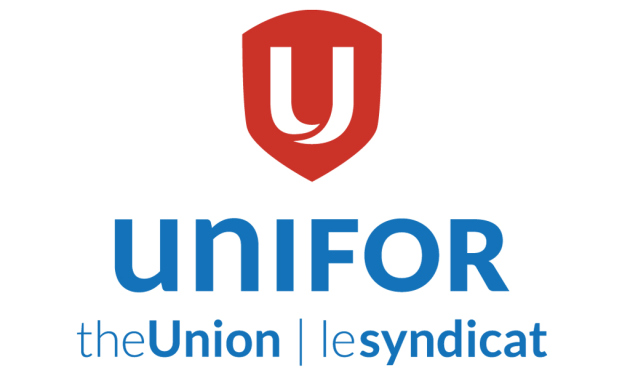Please support our coverage of democratic movements and become a supporting member of rabble.ca.
May 30 will be a date to remember. It was the day thousands tuned in — some in person, many online — to find out the long awaited name of our new union.
The word “Unifor” appeared on screen midway through a spectacular public event in Toronto. The new name appeared alongside a bold new logo — a shield housing a stylized letter “U” in the middle, reflecting the coming together of two unions.
You could hear 200 participants in the room gasp and then break into an uproar of applause. The most anticipated union renewal project in Canadian labour history finally had a name and an identity.
Unifor: the new Canadian union.
In the days following the launch, many have asked: Why Unifor? I like it, but I don’t get it. Some have said they think it’s a refreshing change, something new. Others feel we’ve missed the mark — and that’s OK, too.
There’s no question Unifor has got people talking. Not just our members but the public at large. And that’s a good thing.
Major television, radio and print news outlets across Canada and around the world carried the story. Online polls sprouted up asking people to cast their votes about the name. Alternative media outlets reported on it extensively, too.
Marketing experts attempted to dissect it. And social media sites lit up with conversation (“Unifor” was actually a top trending topic on Twitter across Canada).
Unifor is a unique name. It’s attention-grabbing. Part of its appeal, as we’ve seen since the launch, is that it’s hard to ignore.
And it’s intentionally ambiguous. We want it to mean different and personal things to our increasingly diverse membership.
Unifor will be a union built for workers. But it will also be a union for the unemployed and self-employed, a union for women and young workers — a union for everyone. That’s its strength.
For too long, unions have had their image constructed for them — by well-resourced opponents. Unions have always brought forward new, progressive ideas for a better society yet we have been tarnished as constantly fighting “against” the decisions of others.
Unifor will push “for” positive and progressive ideas and not get stuck fighting “against” bad ones. Our goal is to help set the progressive agenda.
As a national Canadian union, it was essential that our name be bilingual. In French the name combines the words “unis” (united) and “fort” (strong). Unifor reflects, in both languages, the core values that our new union stands for: unity and solidarity, strength and determination, and a modern, forward-looking perspective.
Our new name is dynamic and versatile. It has possible applications as diverse as our membership. It reflects the hard work our union will do to improve the lives of all Canadians.
Unifor is strong, principled, and inclusive. New membership approaches will redefine who can be a union member and radically change the trade union landscape.
A strong union protects and defends its members and stands for safer workplaces, secure employment, wages and benefits.
This was a message we heard loud and clear from both members and the general public, young and old.
The shield logo reflects this sense of protection and strength.
The colours — a bold red and blue — were chosen to make Unifor stand out and have instant recognition. The fiery red conveys our passion and commitment to our members. We will be unmistakable.
All that said, it is difficult to part with the past. Our unions each have a long, proud history — one defined as much by our struggles as our successes.
We will carry those memories with us, in our minds and in our hearts, as we bear down and face the challenging road ahead.
We wouldn’t be honest if we said we weren’t afraid of change. There’s something unsettling with the unknown.
But if we don’t change, the movement dies and working people suffer. Canada becomes a more unequal, more unfair and less inclusive society. We would have betrayed those that have come before us.
Change is what the CAW did in 1985, when it broke from its U.S.-based parent to form a daring new organization. Change is what unites Canadian communications, energy and paper workers together as a diverse and potent new union in 1993.
Our willingness to change saved our unions. These changes made for a better Canada.
Let’s never forget our history but let’s embrace change. It’s served our union well in the past. We’re certain it will serve us well in the future, through Unifor.
Ken Lewenza is the National President of the Canadian Auto Workers union (CAW) and Dave Coles is the National President of the Communications, Energy and Paperworkers Union of Canada (CEP).
This article was originally published in the Windsor Star and is published here with permission.



